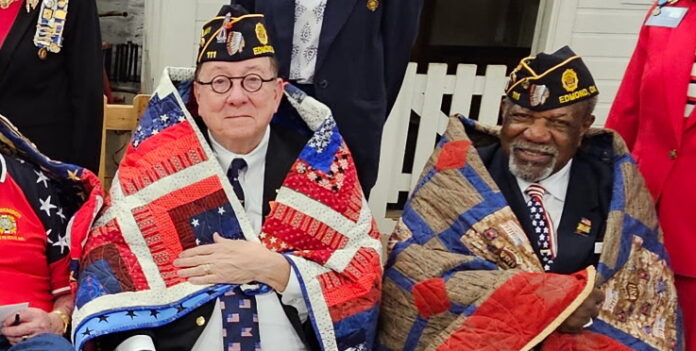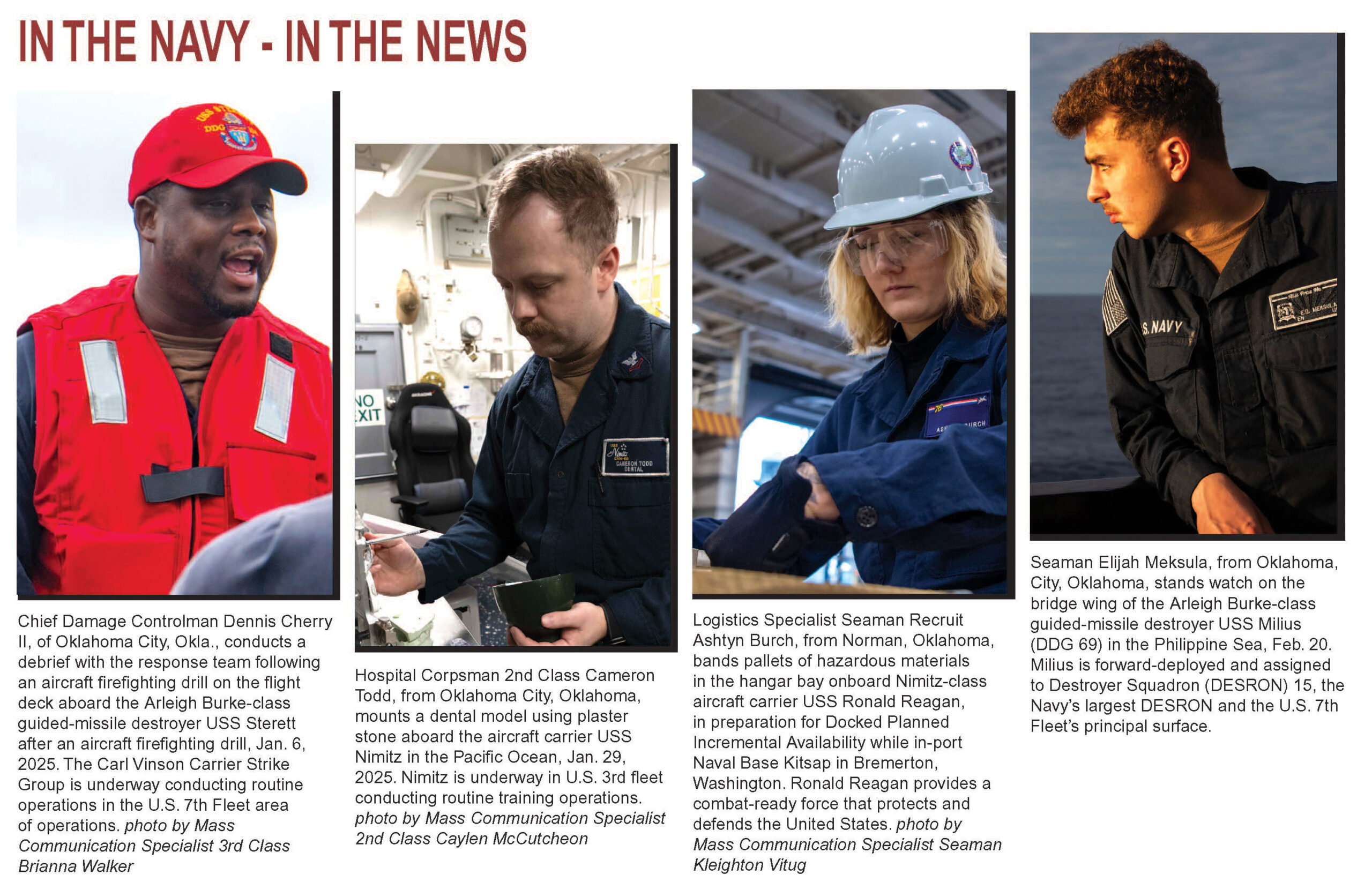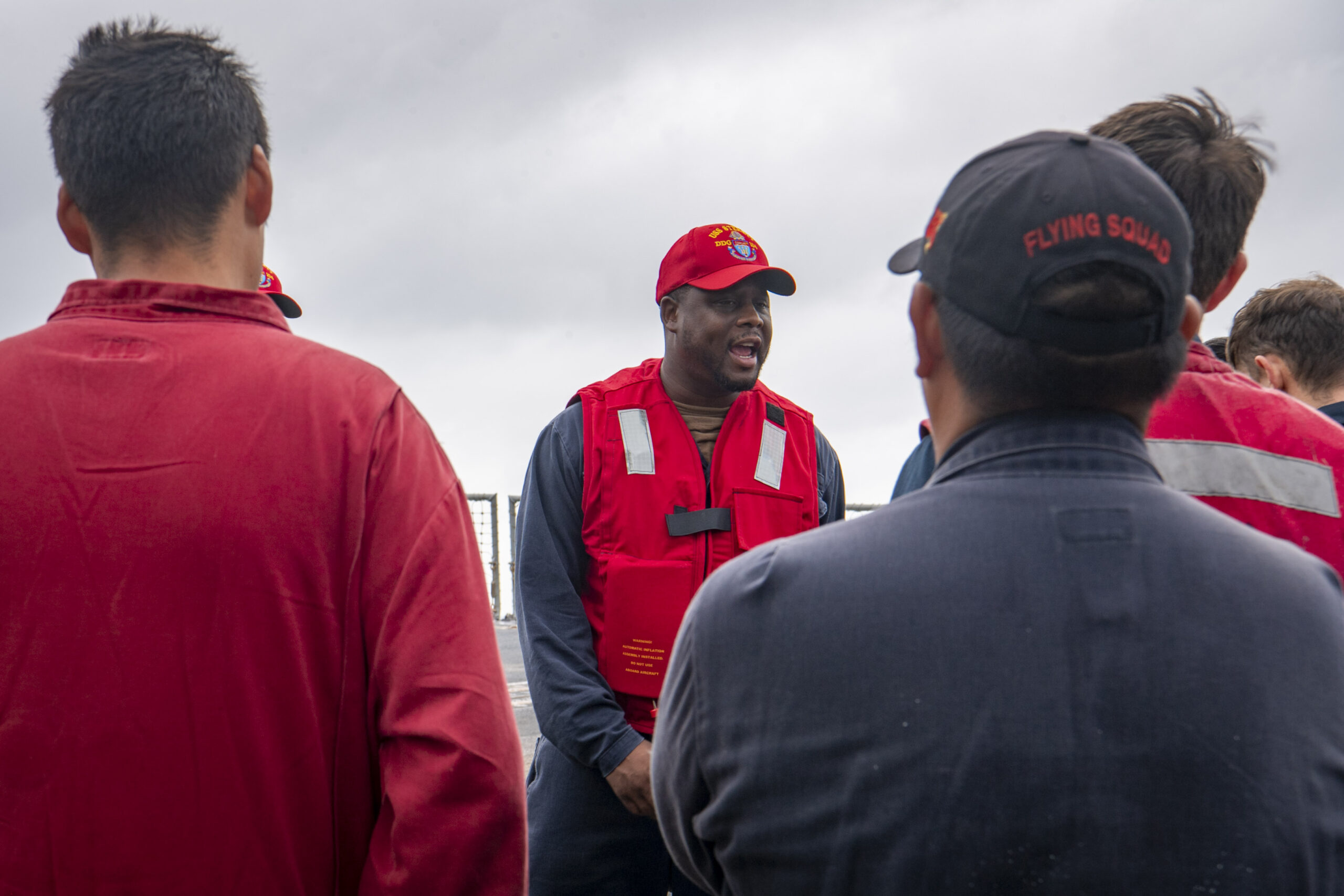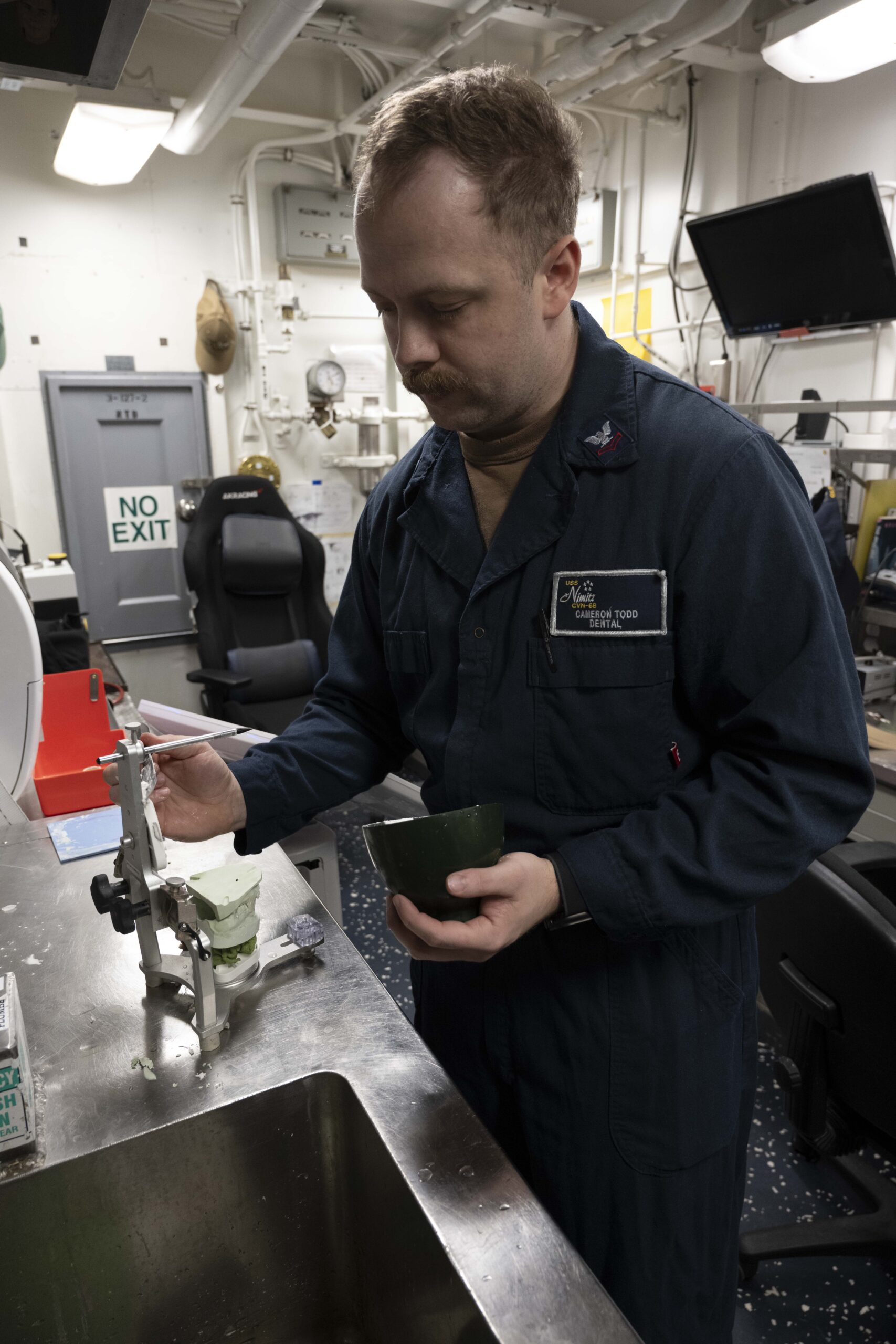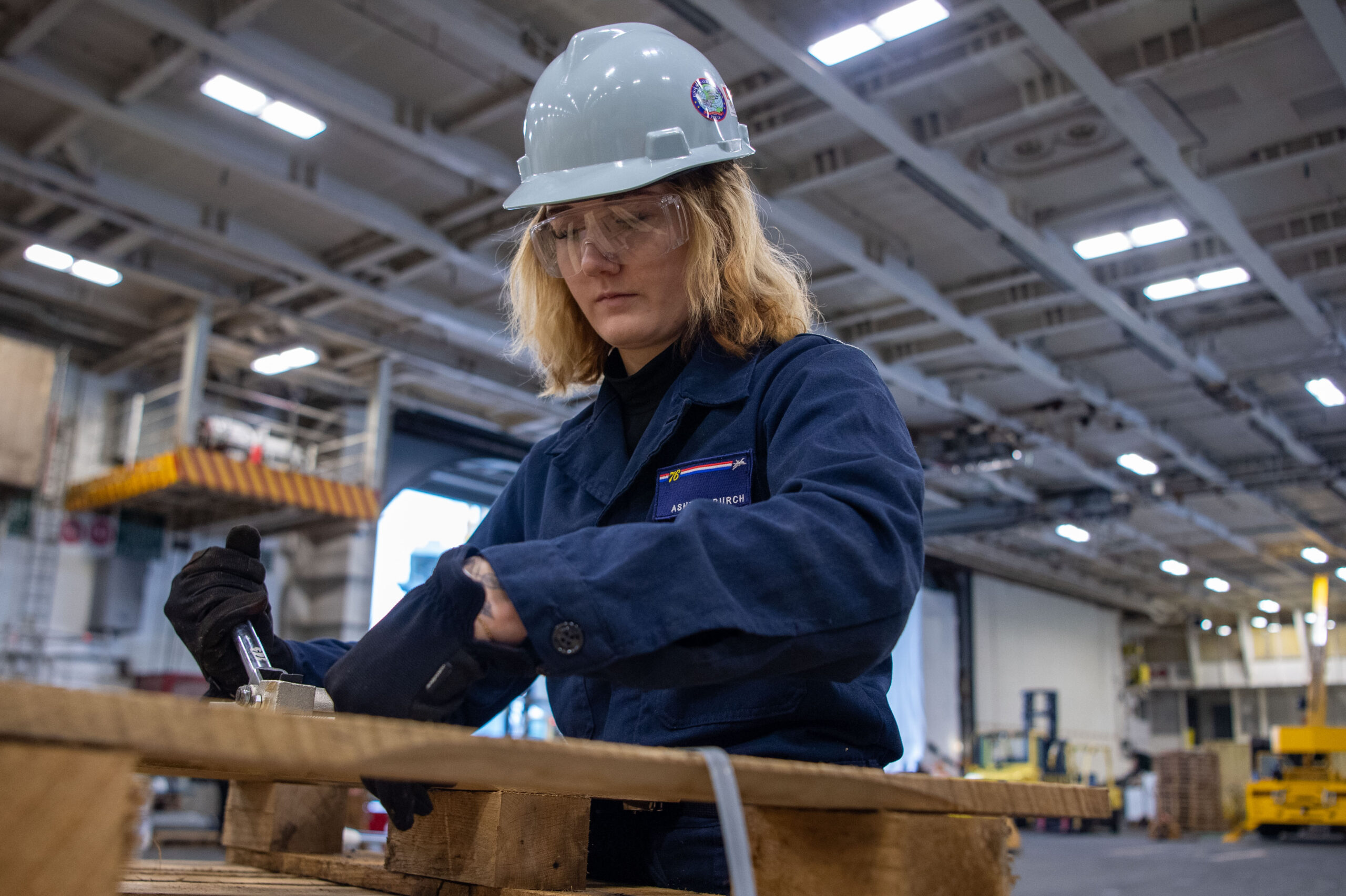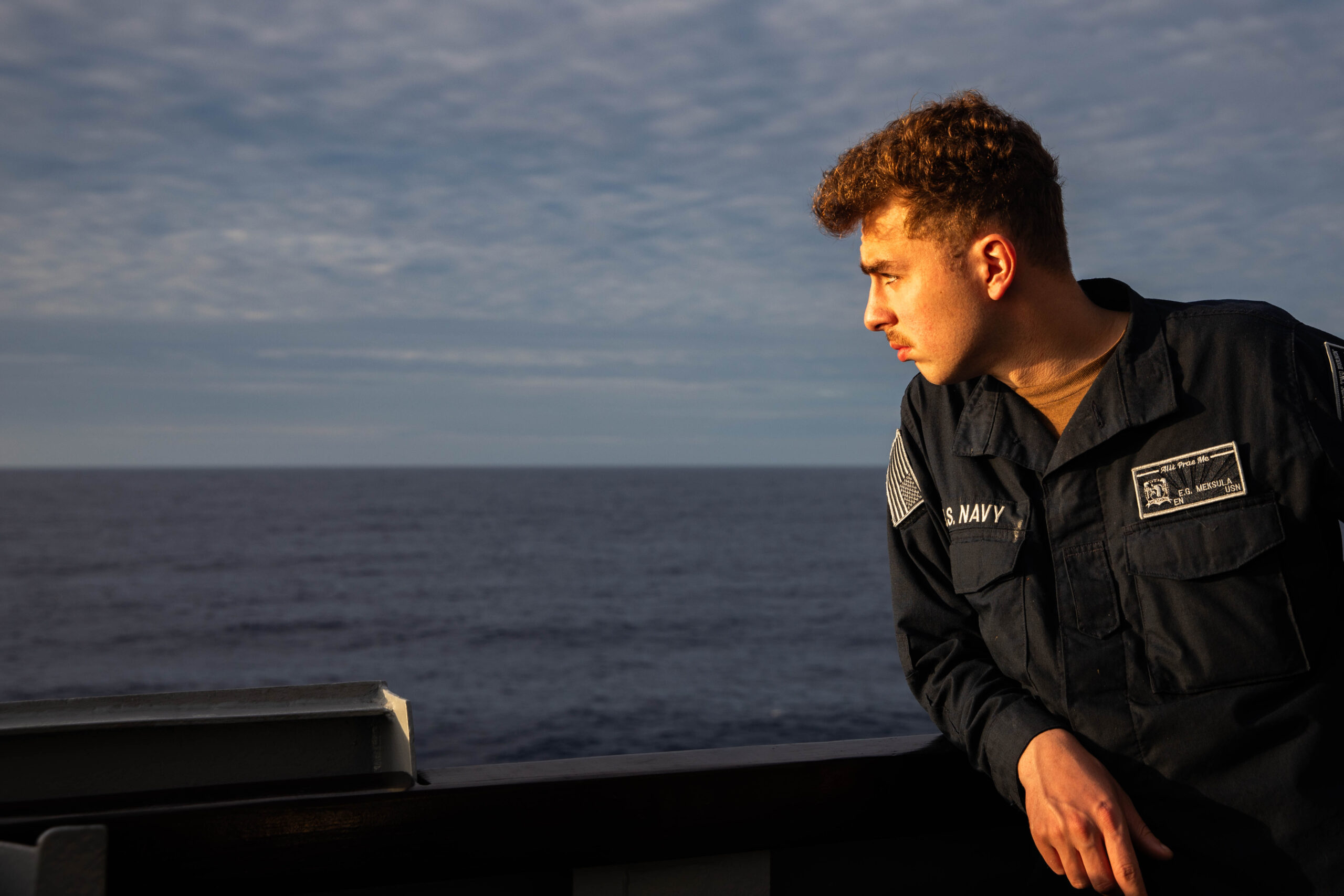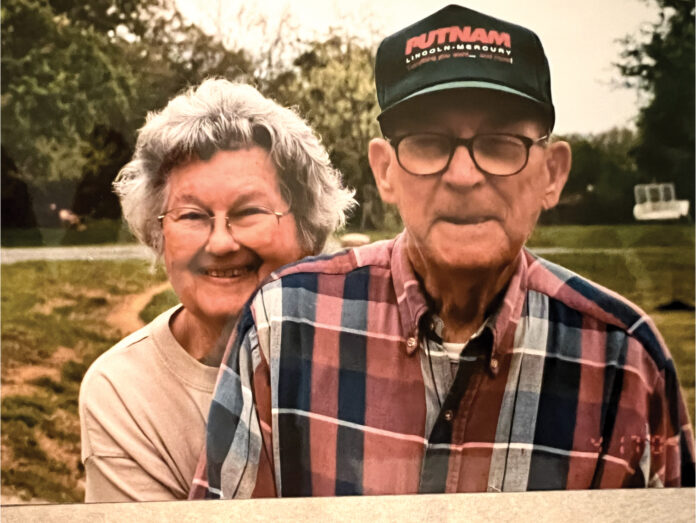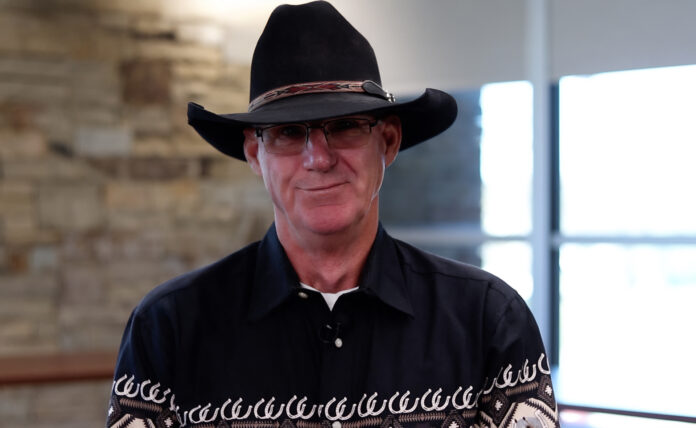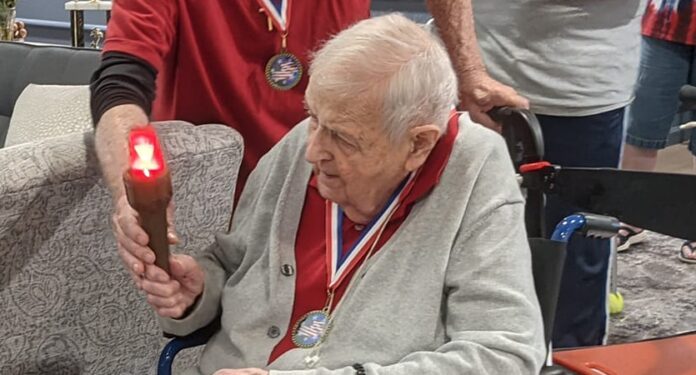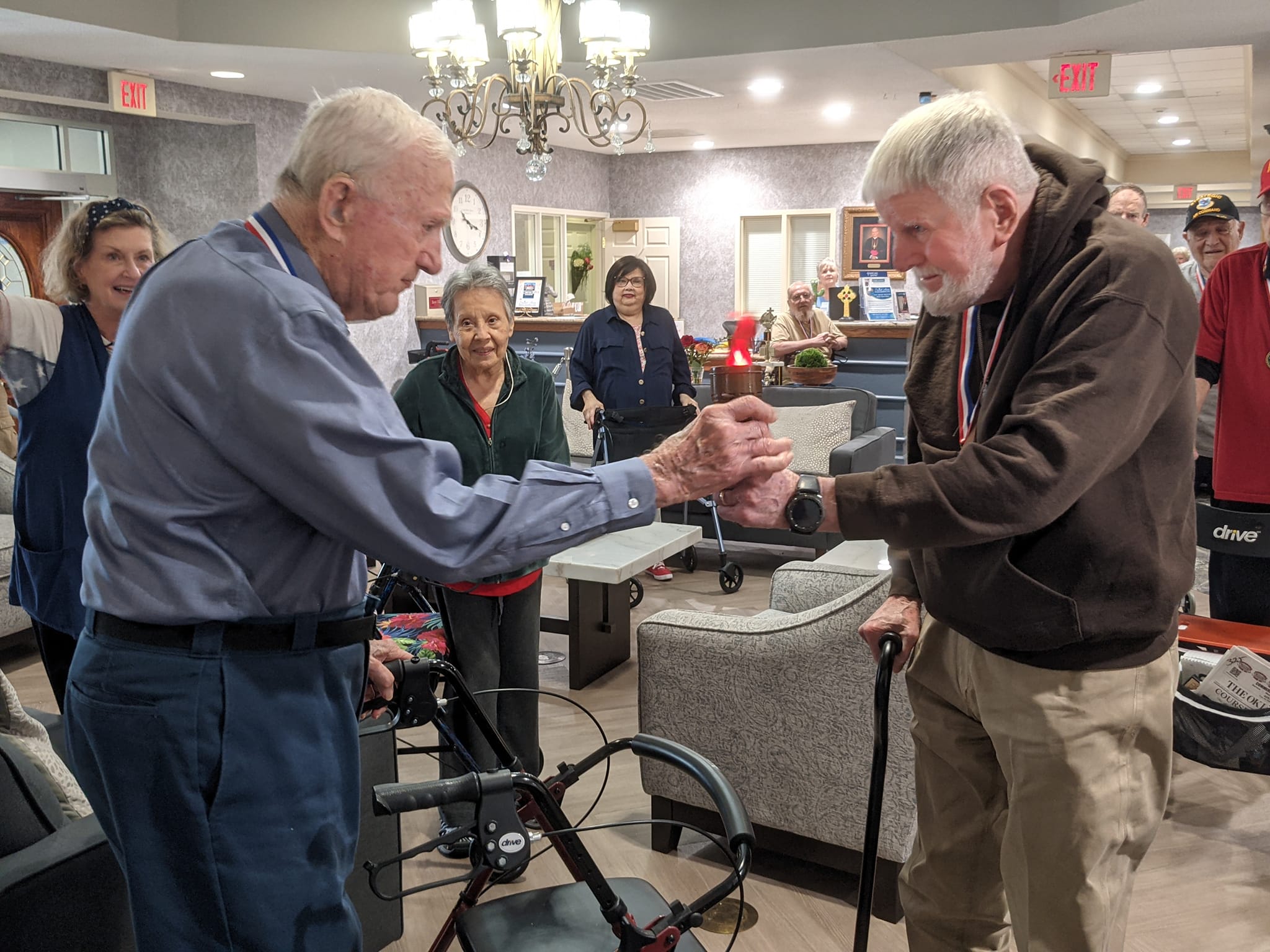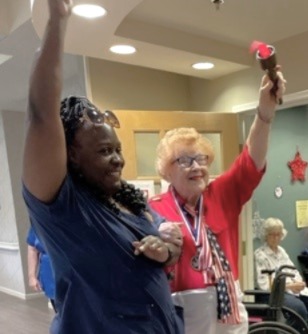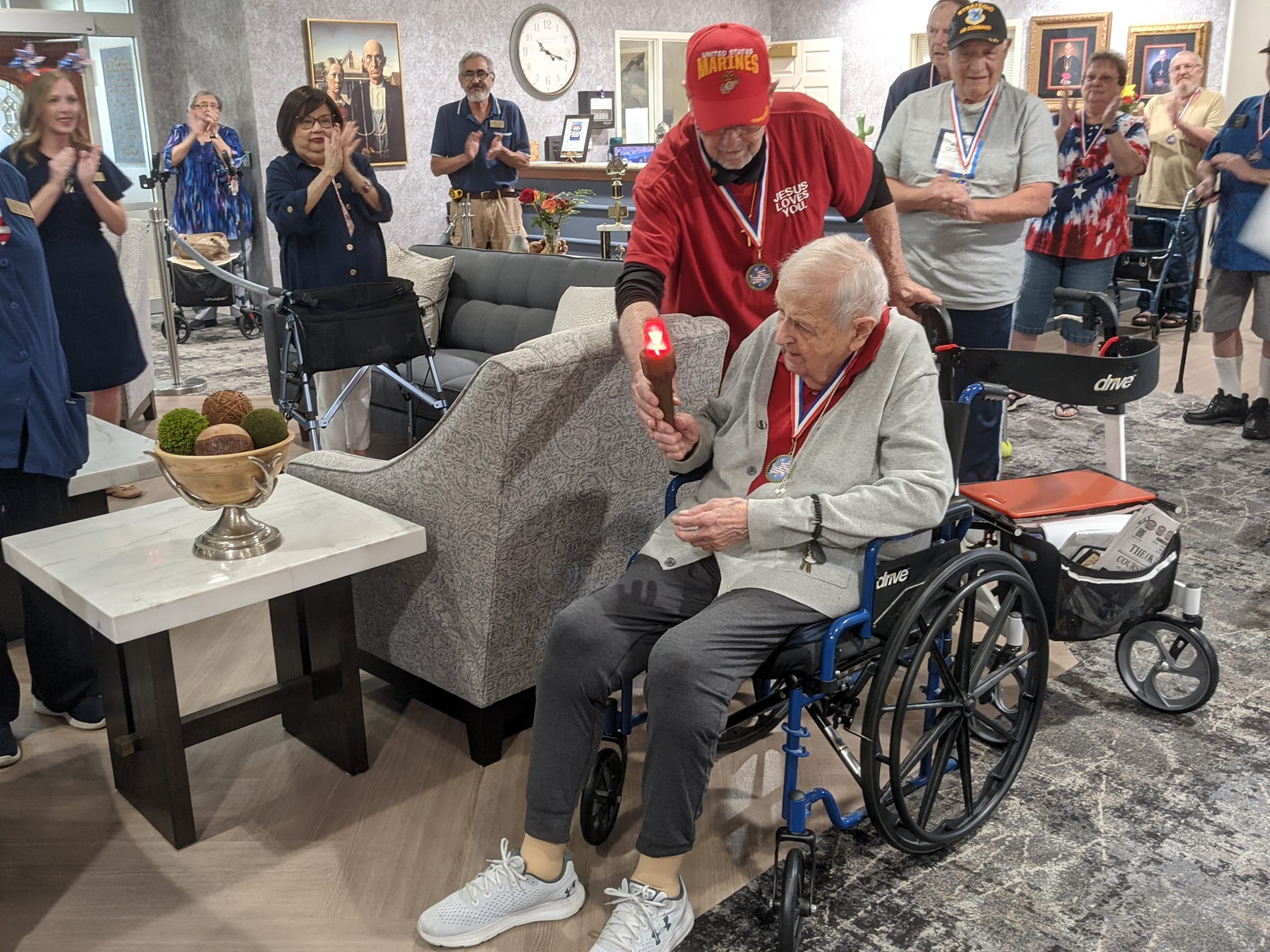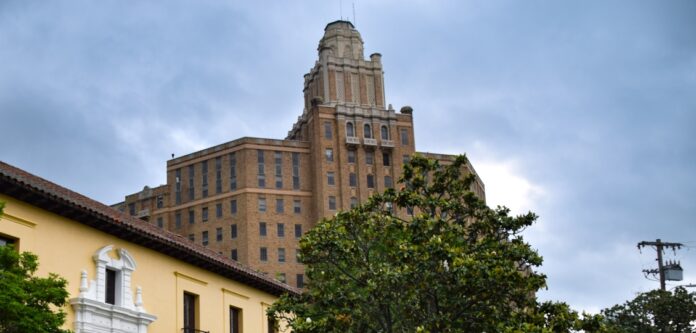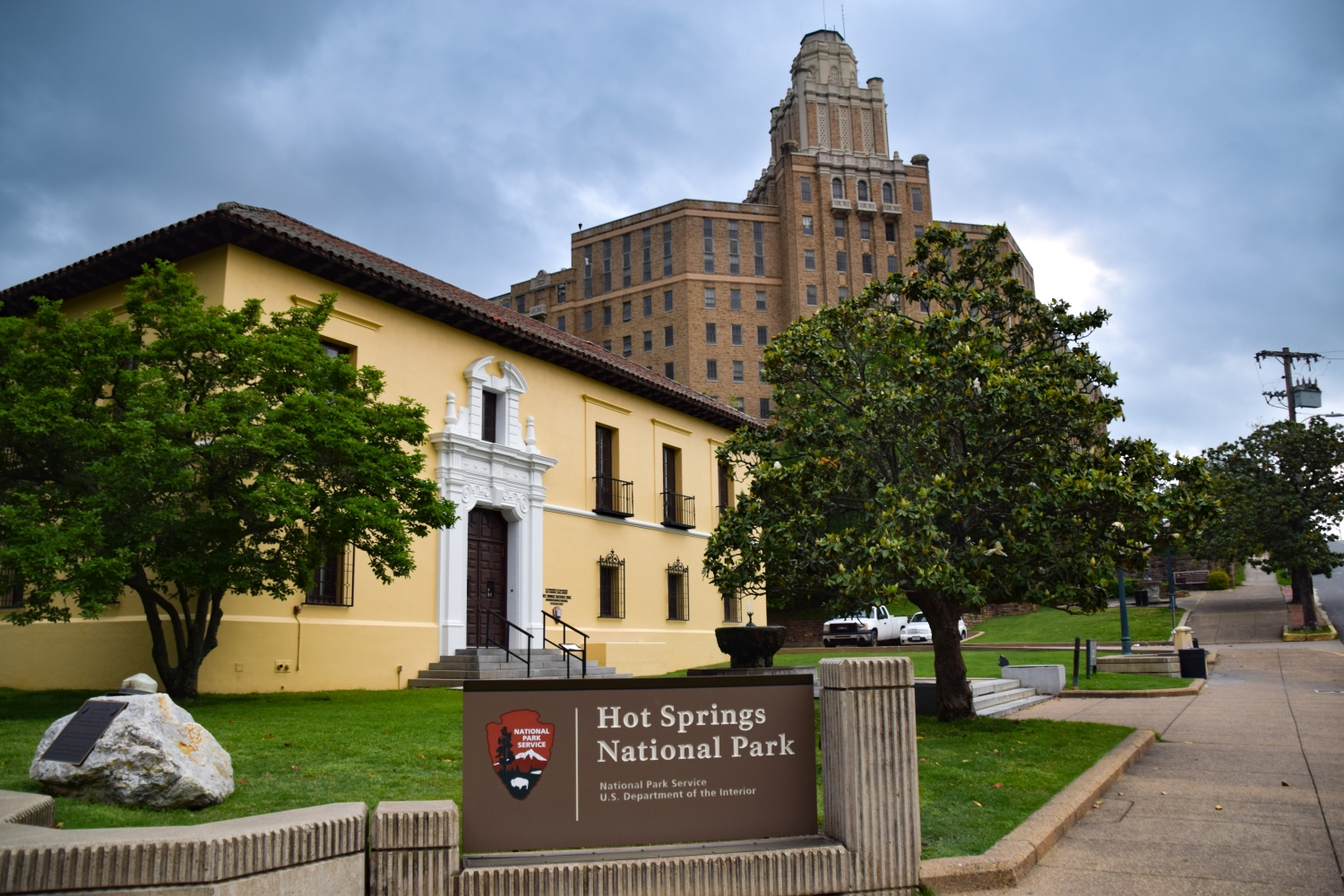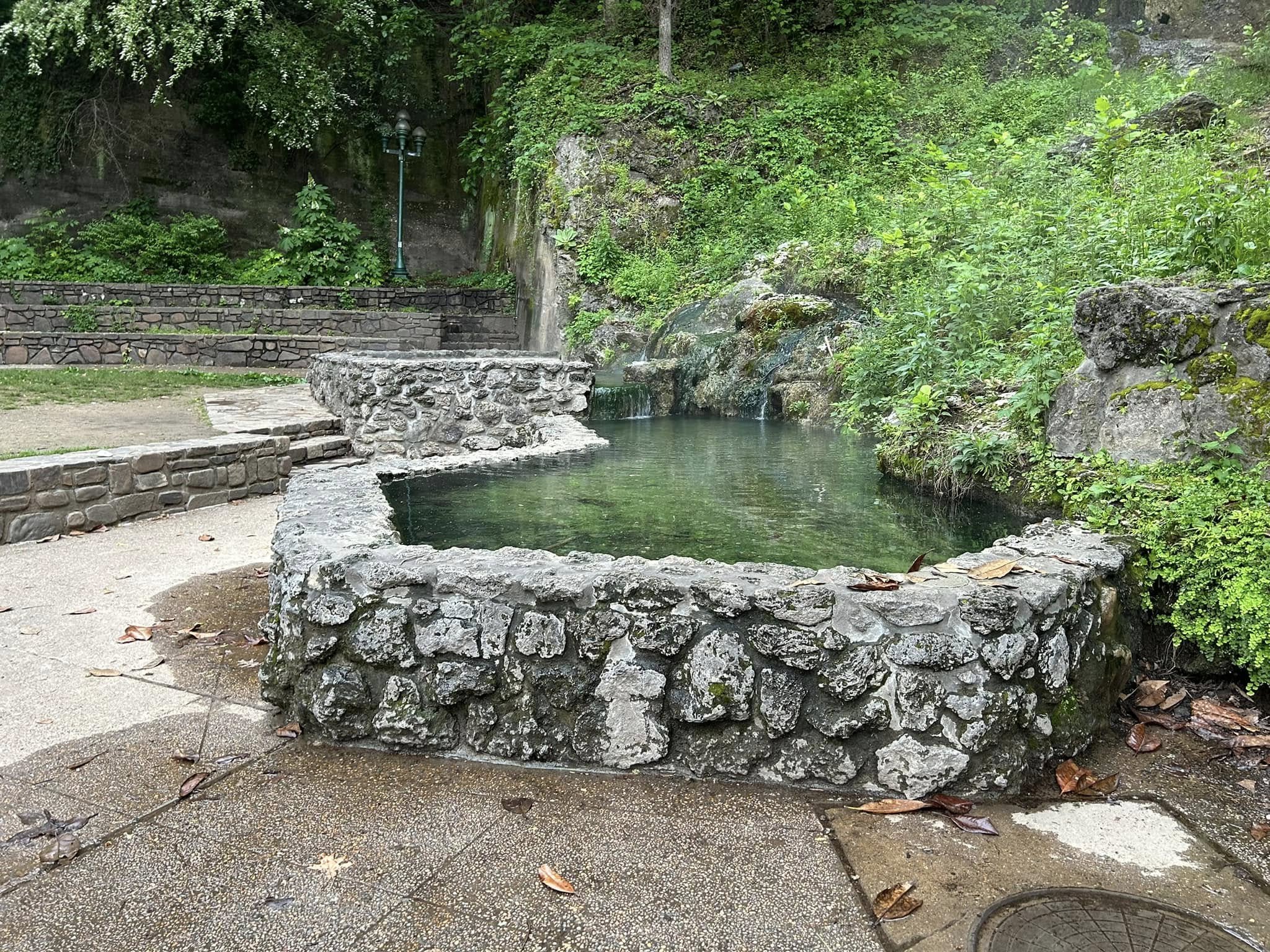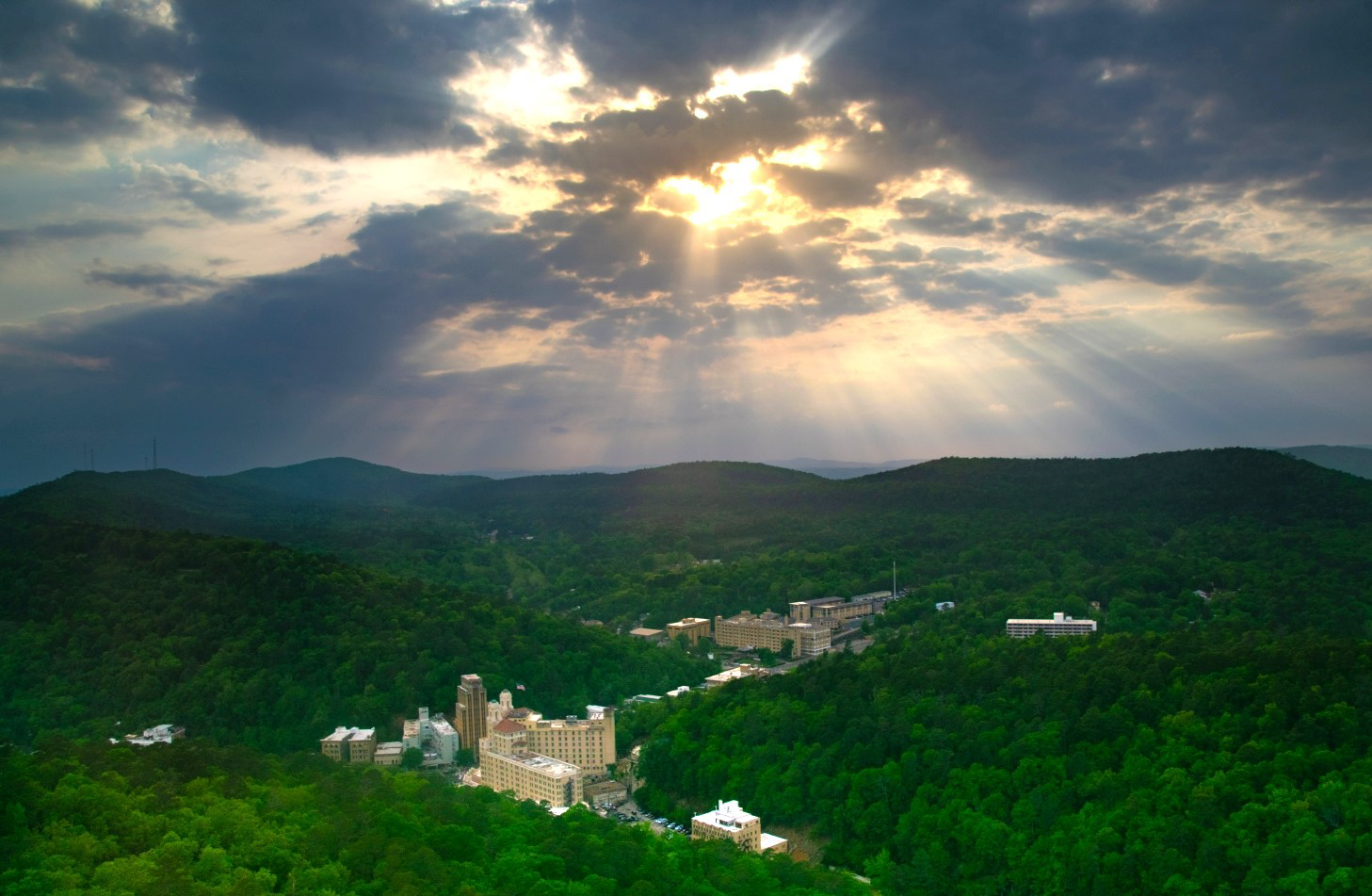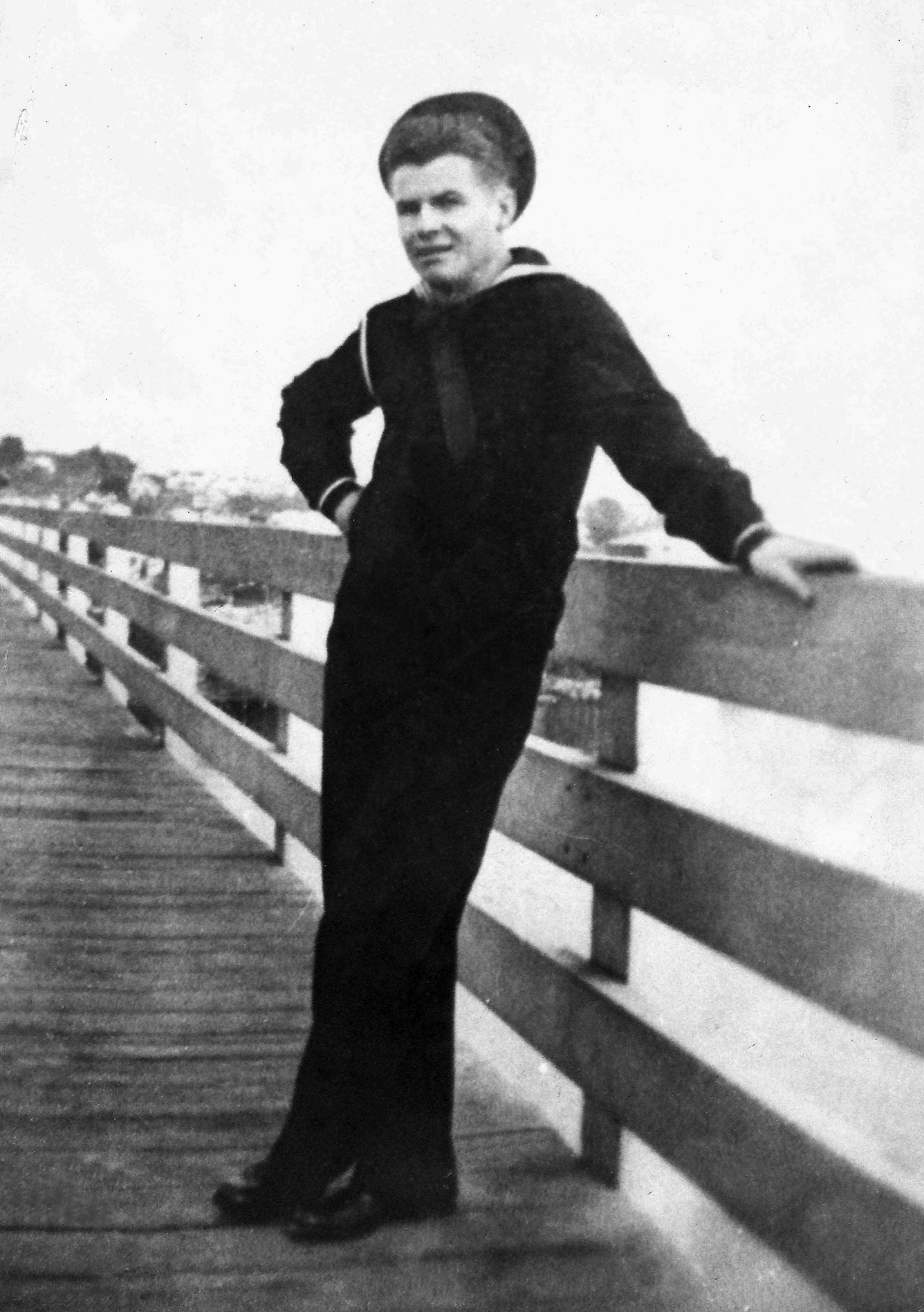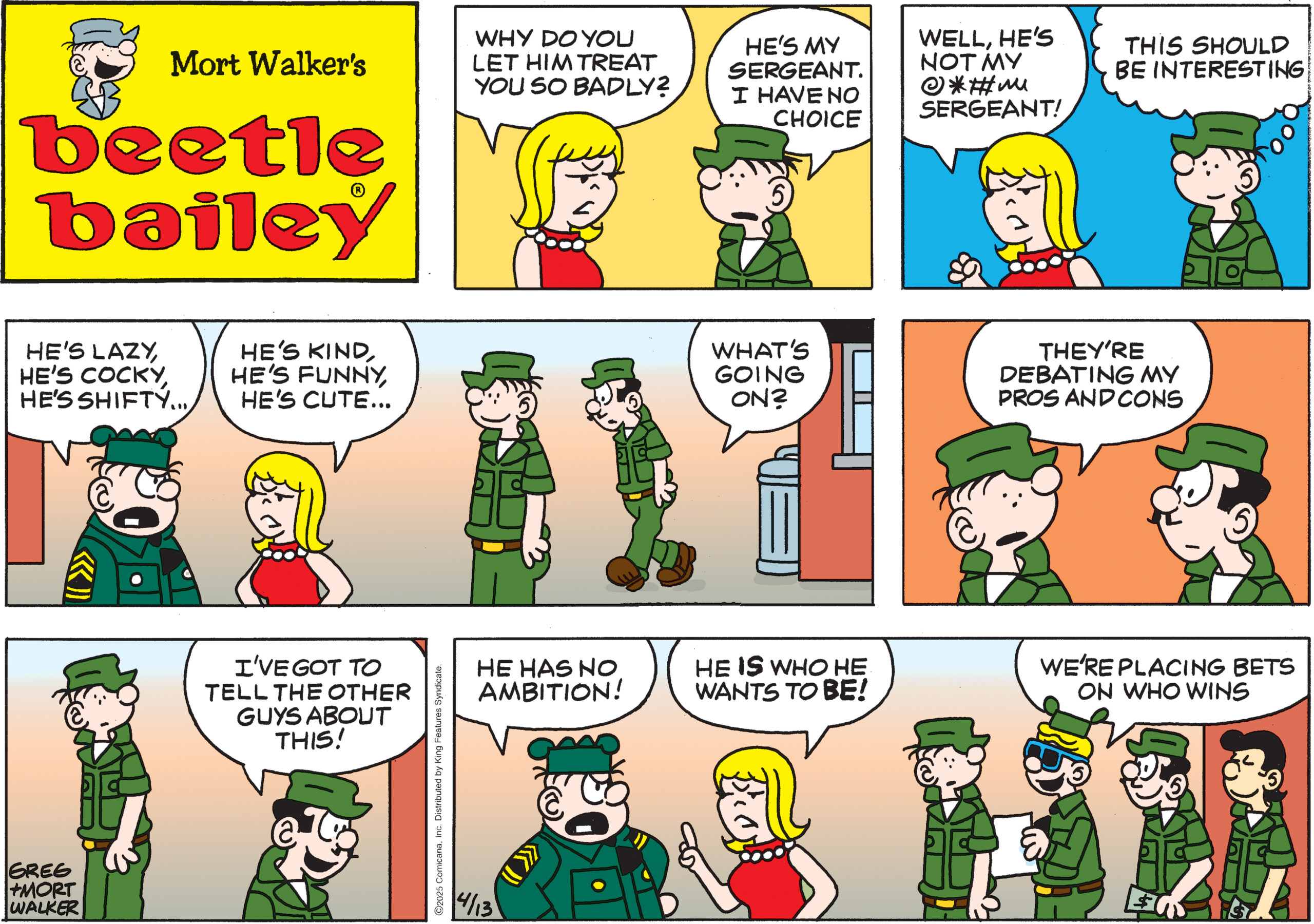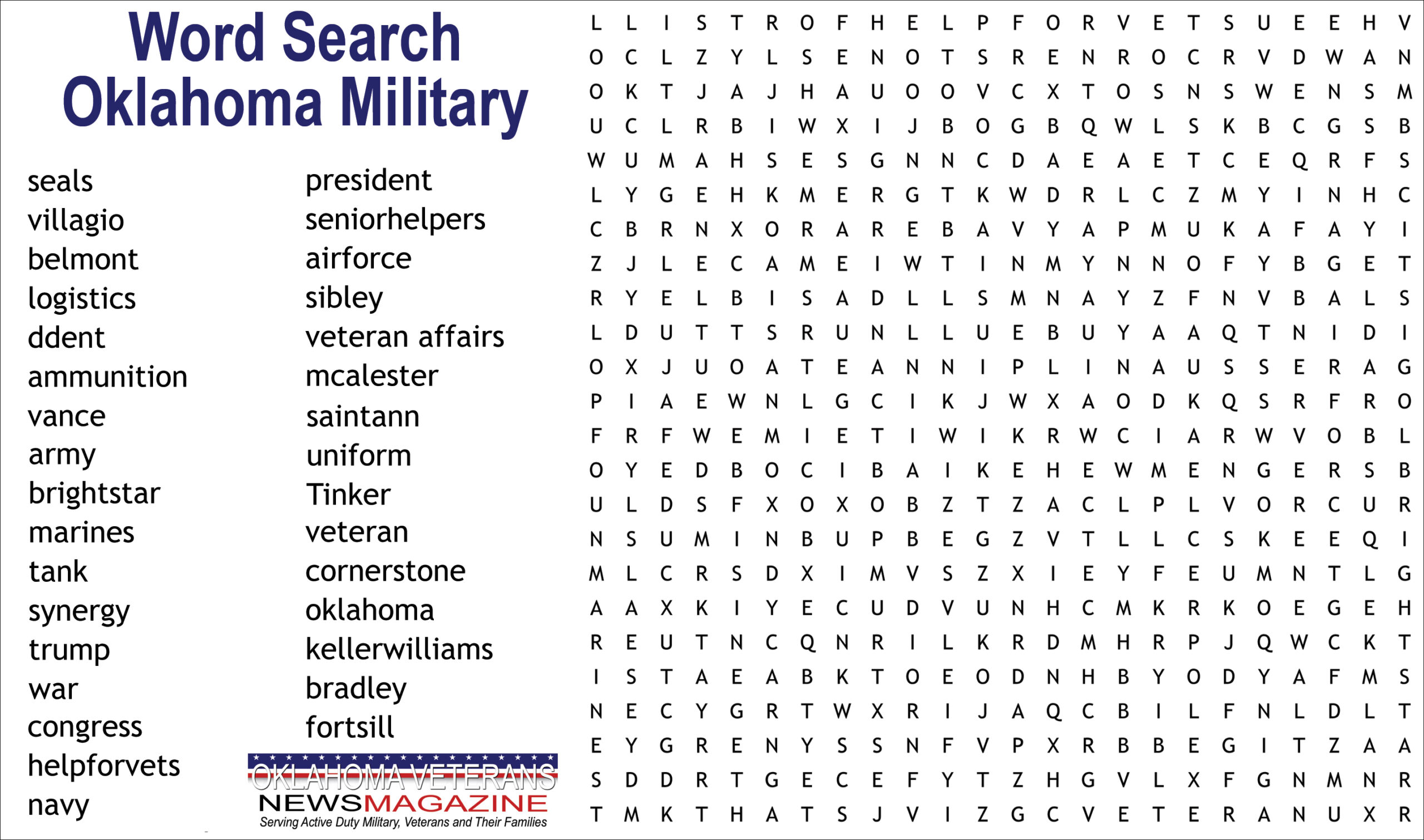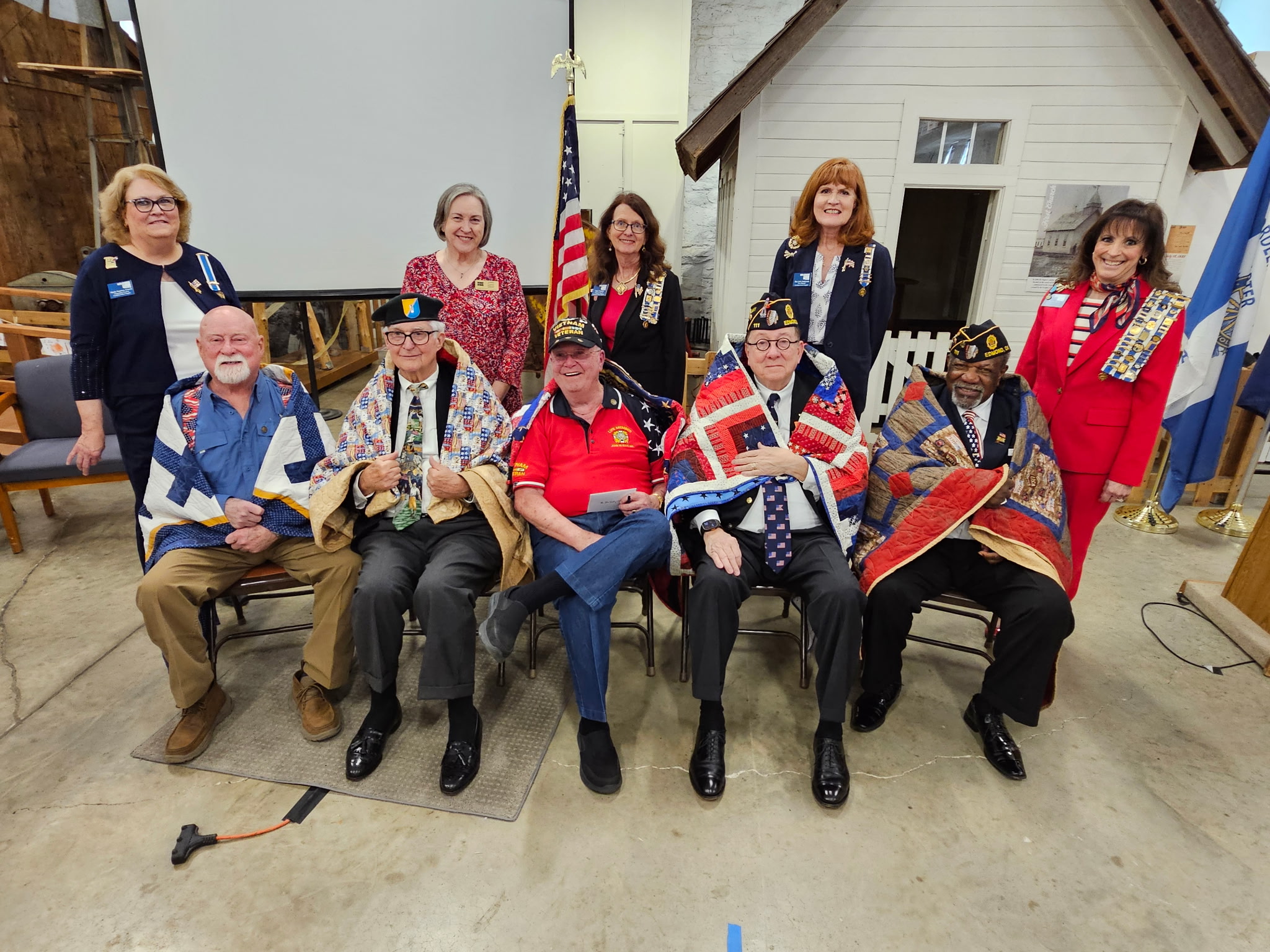
For National Vietnam War Veterans Memorial Day, five veterans were honored with patriotic Quilts of Valor: John Wesley Ellis II (U.S. Army), Larry Perdue (U.S. Navy), Raymond McCormick (U.S. Marine Corps), Arthur L. Haizlip (U.S. Navy), George Verstraete (U.S. Army).
The Quilt of Valor Ceremony was held at 3 p.m. on Saturday, March 29 at the Edmond History Museum. The event was hosted by the National Society Daughters of the American Revolution (NSDAR), Cordelia Steen Chapter. There is no admission and all ages are welcome.
The museum remained open during the ceremony.
During the ceremony, each of these veterans received a handmade patriotic quilt made by the Piedmont Quilt of Valor Foundation, whose goal is to cover service members and veterans touched by war with comforting and healing of quilts.

“The Quilt of Valor has been going on for quite a few years now. It’s an organization that honors all veterans that have been touched by war,” said Tammy Ross, DAR Service for Veterans chair with the Cordelia Steen Chapter, NSDAR. “The Quilt of Valor Foundation, they make the quilt, but other organizations do the ceremony. It’s my chapter that does the ceremony.”
Ross said her DAR chapter is five years old.
Established in 2020 with a charter membership of 26 ladies, the Cordelia Steen Chapter has grown to a thriving membership of 80 in 5 years. The Chapter was named Cordelia Steen in honor of the first pioneer women of Edmond.
“We’re part of the national society, Daughters of the American Revolution. And our goals are patriotism, education and historic preservation,” she said. “And this is part of our patriotism that we do. We honor our veterans. Last spring we did one for 10 recipients. This year we just honoring five men, and they represent the different branches of the military. Although this year, we don’t have an Air Force guy.”
The five veterans being honored include Verstraete a 1st Lieutenant who served as a Green Beret in Vietnam; McCormick is a Purple Heart recipient who served as a combat trainer in Vietnam; Haizlip served in the JAG; Perdue served as an aviation machinist; and Dr. Ellis served as a helicopter medic.
Ross said the DAR did the pinnings as part of the event.
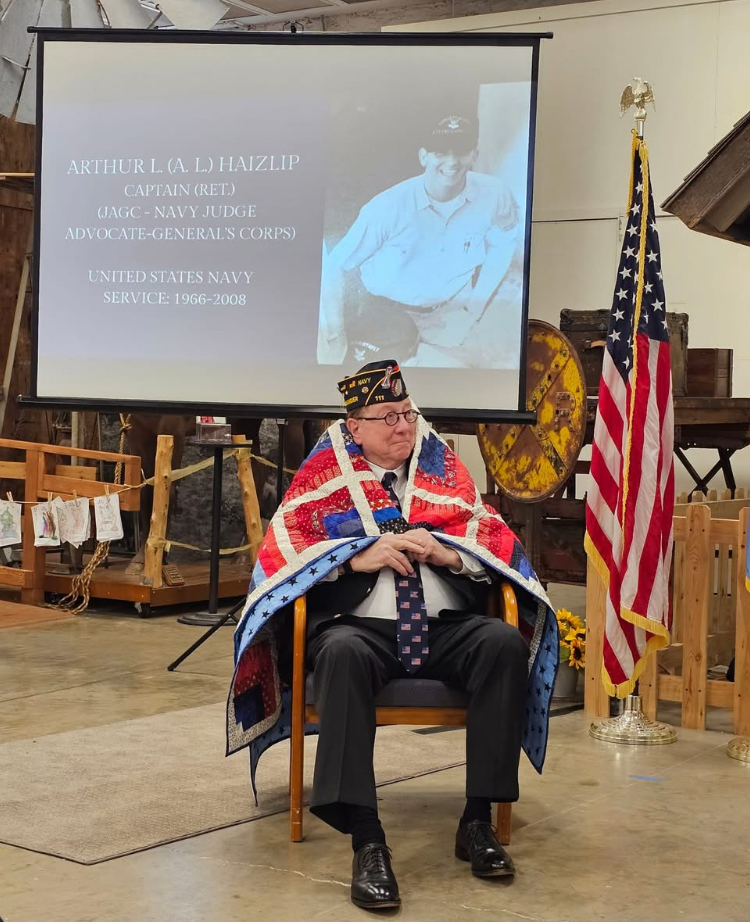
“Any Vietnam Veteran who came to this ceremony also received a pin,” she said. “Because we’re partners with the 50th anniversary Vietnam War Commemoration Organization, we’re able to give out these pins on behalf of them. We presented these pins to any Vietnam Veteran that was there that has not received one. It was a neat program.”
Ross said it’s important to honor the service and sacrifices that veterans have made serving their country.
“They sacrificed themselves to be able to represent our country to protect it,” she said. “In all the things that the veterans do, and all the different wars that we’ve had that went all the way back to the Revolutionary War, they fought for a cause, and they fought for our freedom, to protect us from different things that could happen to our country.”
The mission of Edmond History Museum is to celebrate Edmond history through preservation and education. Museum hours are 10 a.m.-5 p.m. Monday – Friday, and 1 p.m.- 4 p.m. on Saturday.
For more information visit www.EdmondHistory.org or by calling the museum at (405)-340-0078. Museum admission is free. story by Van Mitchell


